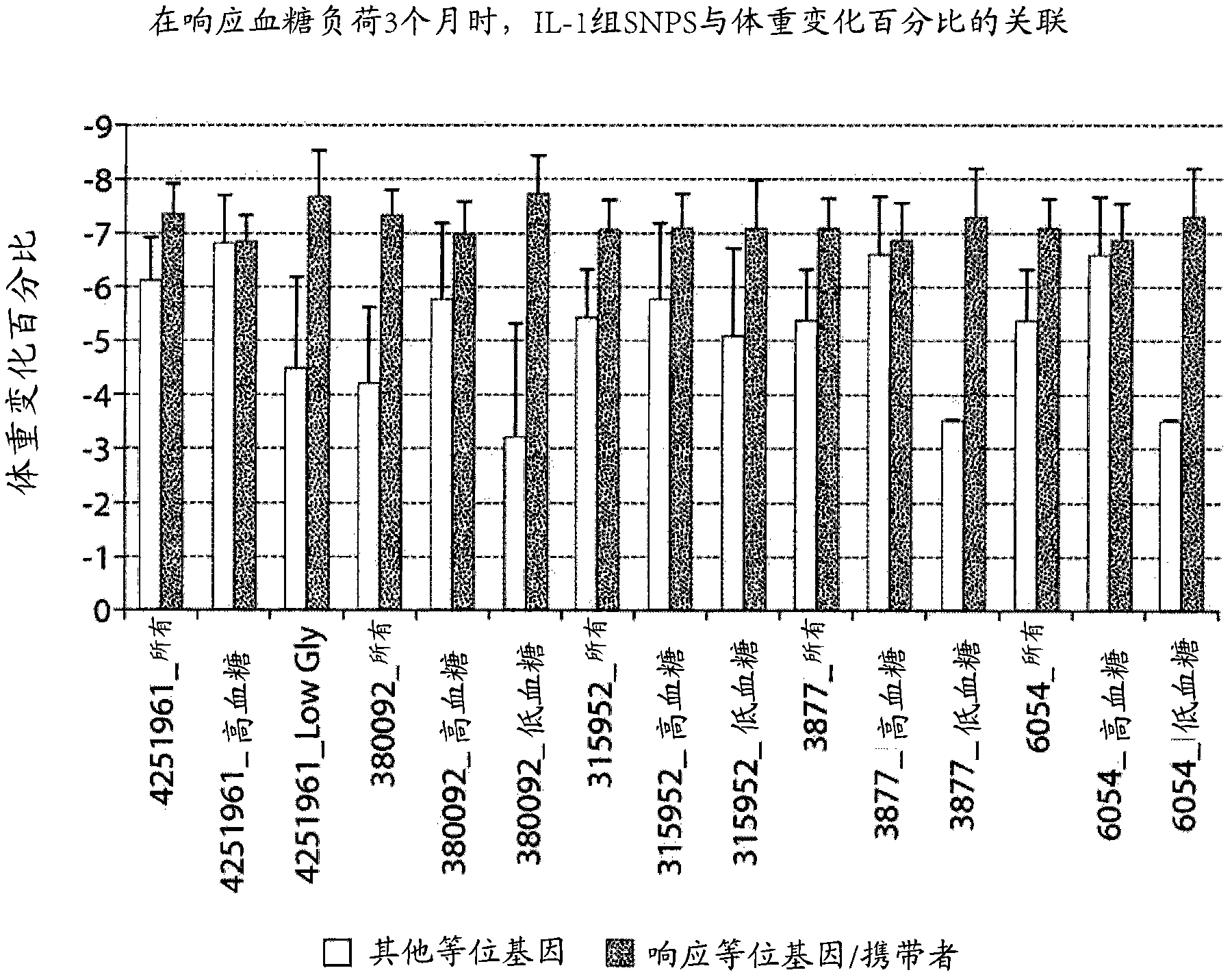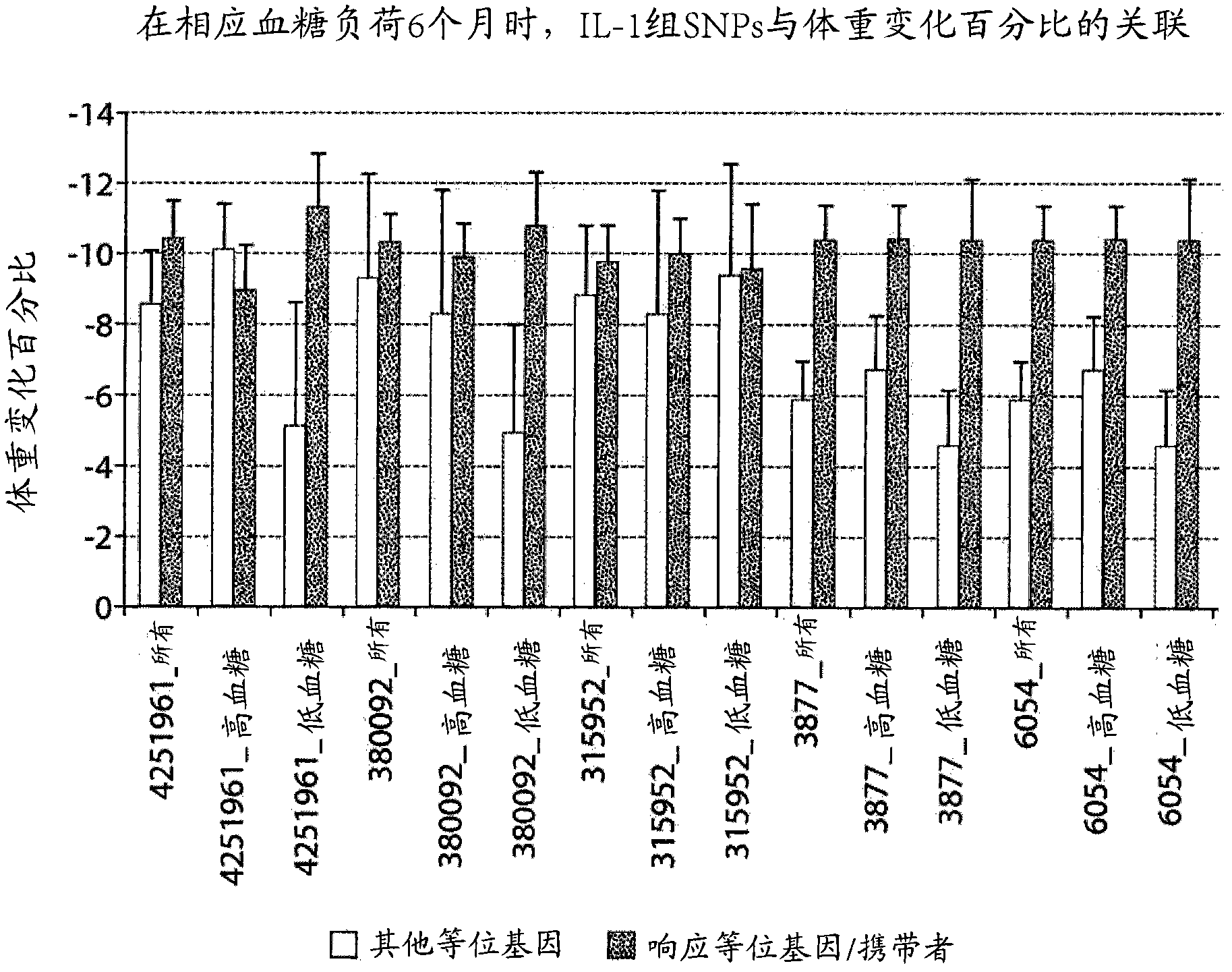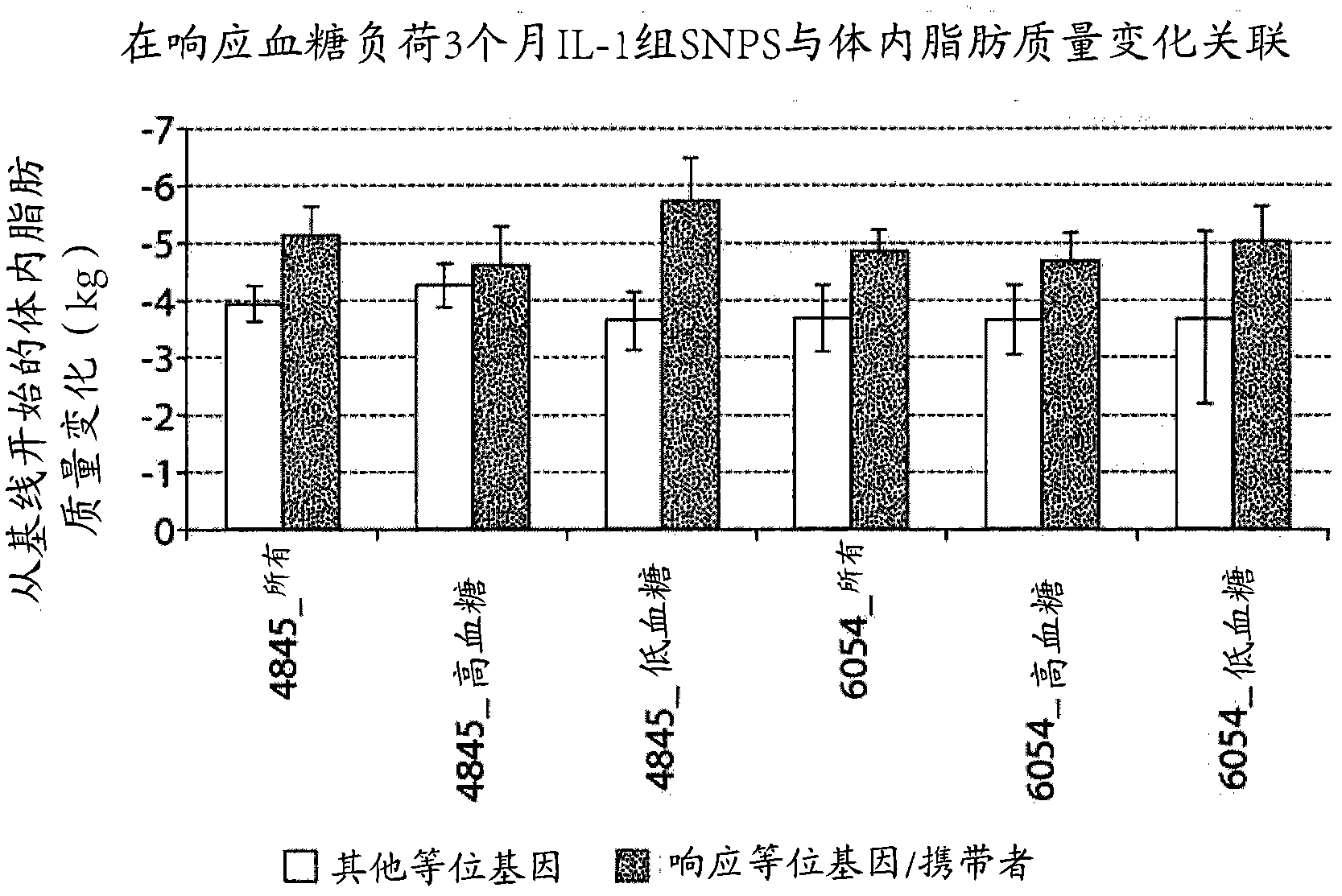Genetic markers for weight management and methods of use thereof
A technology of subject and scheme, applied in the field of genetic markers for weight management and its application, can solve the problems of linkage disequilibrium and linkage disequilibrium of pathogenic polymorphic loci
- Summary
- Abstract
- Description
- Claims
- Application Information
AI Technical Summary
Problems solved by technology
Method used
Image
Examples
Embodiment 1
[0280] Example 1: Calorie (CALERIE calories) (energy restriction intake long-term effects comprehensive assessment of impact) preliminary research.
[0281] Chronic inflammation is associated with metabolic syndrome and central obesity. The aim of this study was to examine whether inflammatory genes such as interleukin-1 (IL-1) genomic polymorphisms (SNPs) were associated with total body weight in response to two diets with different carbohydrate contents under caloric restriction conditions. Correlation of weight loss, fat loss, and resting metabolic rate. The genes of this study were analyzed, and the calorie (CALERIE calorie) (comprehensive assessment of the long-term impact of energy restriction intake) was reviewed in the preliminary study population, using healthy overweight (BMI value 27.8±1.6kg / m2) from 29 genes analyzed 2 ) samples taken from adults. The Calories (CALERIE Calories) pilot study was a one-year randomized rigorously controlled trial in which high o...
example 2
[0301] Example 2. Geisinger study.
[0302] With the support of the calorie study, a second, larger study aimed to investigate the relationship, whether dominant or synergistic, of the SNPs listed in Table 5 with resistance to weight loss from an energy-restricted diet in subjects. In addition, it should be investigated whether metabolic syndrome factors, such as dyslipidemia or abnormal fasting glucose, are associated with these changes.
[0303] table 5.
[0304]
[0305] Research design
[0306] The Geisinger study was conducted in two main phases. In the first phase (~4 months), all subjects were recommended to use a diet containing 1200-1500 (female group) kcal and 1500-1800 kcal- (male group) calories, respectively. Those who lost 3% of their body weight were classified as group A. In the second phase (~4 months), all subjects who lost 5% of their body weight early on were classified as Group B (Early Responders), while those who lost the same body weight at a lat...
PUM
 Login to View More
Login to View More Abstract
Description
Claims
Application Information
 Login to View More
Login to View More - R&D
- Intellectual Property
- Life Sciences
- Materials
- Tech Scout
- Unparalleled Data Quality
- Higher Quality Content
- 60% Fewer Hallucinations
Browse by: Latest US Patents, China's latest patents, Technical Efficacy Thesaurus, Application Domain, Technology Topic, Popular Technical Reports.
© 2025 PatSnap. All rights reserved.Legal|Privacy policy|Modern Slavery Act Transparency Statement|Sitemap|About US| Contact US: help@patsnap.com



